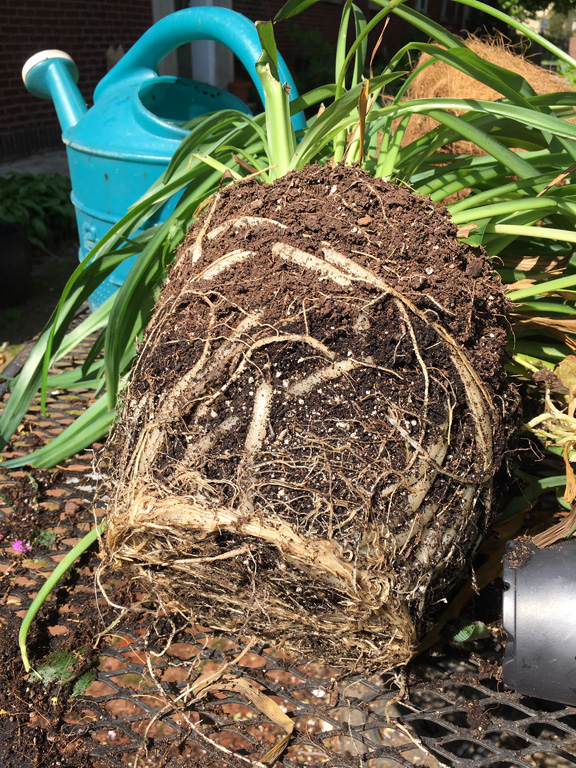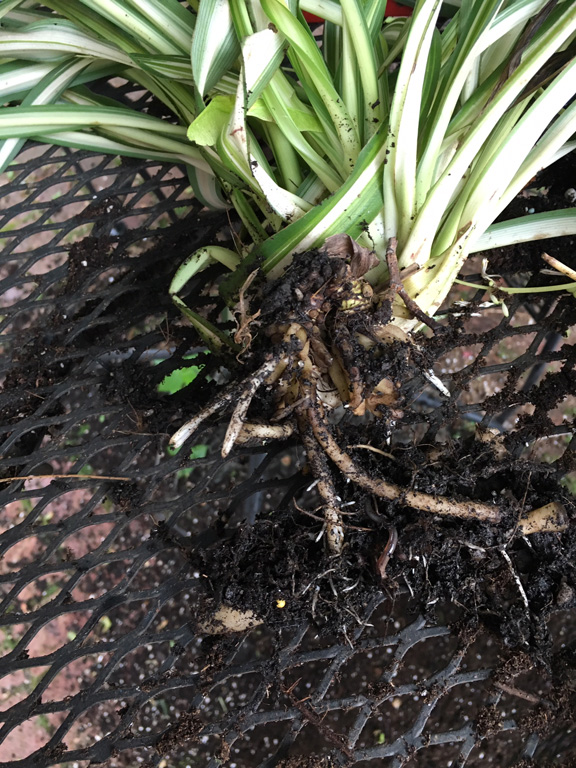
In life and gardening, we all make mistakes—sometimes, even when we know better. My big mistake this year (so far) was buying cheap potting mix.
I understand perfectly well how important the quality of potting mix is to container plants in greenhouses, in the house, and outdoors. I know that the mix must be light and fluffy, rich with organic matter, so that it both holds just the right amount of moisture and lets the surplus drain away freely.
Plants need water, but their roots also need oxygen. If water is trapped around the roots within the confines of a pot, they can’t get oxygen and will begin to rot. That’s why we use special potting mixes in our containers rather than ordinary garden soil.
But I was in a rush. A rare weekend morning had dawned bright and clear in a spring that felt like an endless succession of rainstorms. I had some time with the right weather, and I was desperate to seize the opportunity to get the houseplants repotted and out into the yard and the annual containers planted. So I found the local garden center was out of the mix I normally use, I didn’t want to spend my precious few hours of sunshine shopping around. I took a chance on a cheaper brand.
Although it wasn’t my usual potting mix, it was a nationally distributed product, not a no-name brand. And it was $6.00 a bag (₤7.60) cheaper than what I usually pay.
The bags weighed tons, but I told myself that was only because they had been stacked out in the rain. When I opened the bags, the mix felt wet, heavy and sticky in my hand. Still, I swallowed my misgivings to get my repotting done.
The sad result was, in hindsight, thoroughly predictable. The plants did not revive after transplanting; despite ample rainfall, they looked increasingly sad and wilted as the weeks went by. With dread, I upended one—a snake plant (Sansevieria trifasciata), the most resilient of houseplants—and discovered that in just a month, its roots had almost entirely rotted away. All that was left was a forlorn little nubbin, hardly enough to hold the plant upright. The potting mix was a sopping mess.

So off I went to another garden center to buy the mix I should have held out for in the first place. I spent a Sunday re-repotting all the plants I had repotted just a month before, scraping off the cheap stuff and nestling them and their few surviving roots into a lightweight mix that I know from experience will allow water to drain.
Fortunately, there were only a couple of outright fatalities. I’m pretty sure the rest of the plants will be able to re-grow their root systems over the summer, now that they’re not drowning.
The good potting mix cost me more than twice as much per quart, but it would have been cheap at the price, if I’d bought it in the first place.
I took the dense, wet, sopping crud I scraped off the plants and scattered it widely on the ground among my perennials. Call it mulch—cheap potting mix, but very expensive mulch. And an expensive reminder that, in the garden as in life, it’s worth the trouble to do the right thing.


